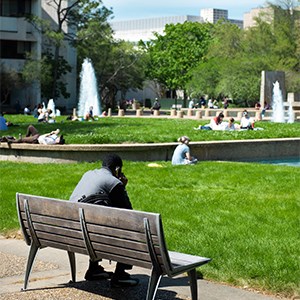Facts:
Project funded by SLU Urban Futures.
Name: Burcu Yigit Turan
Department:Department of Urban and Rural Development
Faculty: Faculty of Landscape Architecture, Horticulture and Crop Production Science (LTV)
Contact: burcu.yigit.turan@slu.se

Social diversity in cities has been increasing world-wide, with the influx of international migration movements due to massive habitat losses, armed conflicts, human rights violations and exploitation, while, migrant receiving cities fail to overcome the challenge of social justice and cohesion. Cities are currently the sites of growing social segregation, polarization, injustices and inequalities. The problem of socio-spatial segregation is bringing questions of landscape, public space, spatial planning and design practices to the center. The aim of the project was to explore the synergies between researchers and practitioners from different fields to shape a strong research project initiative and a consortium for future funding applications and for other collaborations for publications, academic or public events, teaching, and activism.
Cities are currently the sites of growing social segregation, polarization, injustices and inequalities. Policy makers, researchers and practitioners propose that public spaces are potential sites for creating social cohesion, equity, integration, and social and environmental justice and sustainability. In 2012, UN Habitat initiated the Global Programme on Public Space aiming at enhancing urban social cohesion (UN Habitat 2016:1). The Swedish government has introduced new architectural and design targets to make Sweden a more “sustainable, equal and less segregated society”. The government called for the development of landscape architectural design to “carefully-styled living environments, which should create good living conditions and help developing a common environment” (Prop. 2017/18:110). The funding agencies have echoed this call. The emerging research in different fields points at the need for furthering critical social theory in urban design in questioning the role of public space in production of desegregating landscapes.
The project consisted of two workshops with participants from different fields. A third activity was planned, a pilot study, but could not be realized because of the pandemic.
The first workshop aimed at explore each participant’s research motivations regarding the gaps in segregation and spatial planning and design research and practices. The disciplinary diversity revealed interesting gaps in spatial planning and research. Furthermore, it also revealed potentials of those different theories, methodologies, practices and observations to further the research and practice in the field of urban landscape. Participants discussed in which capacity they could be part of funding applications. There was also discussion on several potential case studies and particular groups for collaboration. The meetings pointed out the necessity to establish an expanded interdisciplinary/multidisciplinary/transdisciplinary network.
The second workshop aimed to challenge the dominant problem representations on socio-spatial justice and segregation in Sweden in urban planning and design research, develop initial ideas on research questions, and elaborate alternative case studies, research models, partners from practice exploring synergies to shape a research project and a consortium for future funding applications and research collaborations.
Funding applications for research and other collaboration activities will be interesting to pursue and to establish potential interdisciplinary/multidisciplinary/transdisciplinary networks for furthering critical social theory in urban design in questioning the role of public space in production of desegregating landscapes.
Project funded by SLU Urban Futures.
Name: Burcu Yigit Turan
Department:Department of Urban and Rural Development
Faculty: Faculty of Landscape Architecture, Horticulture and Crop Production Science (LTV)
Contact: burcu.yigit.turan@slu.se
SLU Urban Futures
urbanfutures@slu.se
www.slu.se/urbanfutures
SLU Alnarp
SLU Urban Futures
Enheten för samverkan och utveckling
Box 190
234 22 Lomma